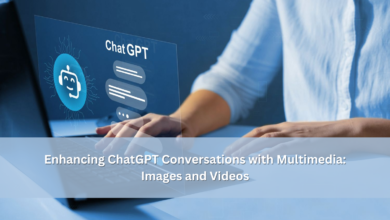Enhancing Virtual Meetings with ChatGPT: Icebreakers and Engagement

In today’s remote work environment, fostering engagement and meaningful interaction in virtual meetings is crucial for team productivity and morale. Leveraging AI tools like ChatGPT can significantly enhance the dynamics of virtual meetings by introducing engaging icebreakers and facilitating active participation. Let’s delve into a detailed walkthrough on how to efficiently use ChatGPT in virtual meetings for icebreakers and engagement:
1. Why Icebreakers are Important in Virtual Meetings:
Icebreakers are essential in virtual meetings to humanize the digital space and foster meaningful connections among participants. By allowing individuals to share personal anecdotes and interests, icebreakers create a relatable and welcoming atmosphere, promoting camaraderie and empathy beyond work-related discussions. These activities break down initial barriers, enabling participants to feel more comfortable expressing themselves and enhancing collaboration and idea-sharing. Icebreakers also set a positive tone for meetings, boosting engagement and combating “Zoom fatigue” by injecting energy and encouraging active participation. They build trust and psychological safety within teams, stimulate creativity, bridge cultural gaps, and aid in remembering colleagues. Ultimately, icebreakers are powerful tools for improving collaboration and making virtual meetings more enjoyable and productive.
2. Icebreaker Ideas:
a. Introduction Icebreakers:
Purpose: Foster connections and ease participants into the meeting.
Implementation:ChatGPT generates fun and relevant icebreaker questions (e.g., hobbies, travel interests).Participants share brief responses to these questions, sparking conversations.
b. Team Trivia:
Purpose: Promote teamwork and engagement through interactive trivia.
Implementation: ChatGPT compiles trivia questions across different categories. Participants form teams and compete to answer questions correctly. ChatGPT tracks scores and reveals correct answers.
c. Virtual Scavenger Hunt:
Purpose: Add excitement and interaction by exploring participants’ surroundings.
Implementation: ChatGPT generates clues related to household items or specific themes. Participants search for and share items based on ChatGPT’s clues. ChatGPT moderates and rewards participants for successful completion.
d. Tips:
Keep activities engaging and inclusive. Ensure seamless integration of ChatGPT with your virtual meeting platform. Encourage active participation and provide clear instructions for each activity.
3. Engagement Strategies:
a) Interactive Polls and Surveys:
- Setup: Prepare poll questions or survey topics before the meeting.
- Execution: Use ChatGPT to present questions and gather real-time responses.
- Analysis: ChatGPT compiles and summarizes responses instantly for visual representation.
b) Q&A Sessions:
- Submission of Questions: Participants submit questions to ChatGPT during the meeting.
- Prioritization: ChatGPT organizes questions based on relevance and filters duplicates.
- Presentation to Host: Compiled questions are presented to the meeting host for efficient Q&A.
c) Role Play or Simulation:
- Scenario Design: Define interactive scenarios aligned with meeting objectives.
- Participant Interaction: Assign roles/tasks to participants; they interact with ChatGPT in the simulation.
- Feedback and Debriefing: ChatGPT provides feedback based on participant actions for post-simulation discussion.
4. Technology Integration:
ChatGPT Integration with Meeting Platforms:
Integrating ChatGPT with your virtual meeting platform enables real-time interaction and engagement during meetings. This is how you can seamlessly integrate:
a) API Integration:
Utilize the ChatGPT API to connect ChatGPT’s capabilities directly into your virtual meeting environment. This integration allows ChatGPT to interact with meeting participants in real-time.
b) Chat Interface:
Integrate ChatGPT’s chat interface into the meeting platform’s chat window. This setup allows participants to interact with ChatGPT easily without leaving the meeting interface.
c) Bot Integration:
Implement ChatGPT as a bot within the meeting platform. This setup enables ChatGPT to respond to queries, facilitate activities, and manage engagement directly within the meeting environment.
d) Custom Commands:
Develop custom commands or triggers that participants can use within the meeting platform to initiate specific interactions with ChatGPT, such as starting an icebreaker activity or requesting information.
Training and Familiarization:
a) Providing Clear Instructions and Training:
To ensure effective use of ChatGPT during virtual meetings, providing clear instructions and conducting training sessions for participants is essential:
b) Pre-Meeting Communication:
Send out detailed instructions or guidelines before the meeting, explaining how participants can interact with ChatGPT and what to expect during the session.
c) Demo Sessions:
Conduct demo sessions or tutorials to familiarize participants with ChatGPT’s functionalities and how to use them within the virtual meeting platform.
d) User Guides or FAQs:
Create user guides or FAQs that participants can reference during the meeting. Include step-by-step instructions on how to engage with ChatGPT, including commands, prompts, and troubleshooting tips.
e) Interactive Practice:
Allow participants to practice interacting with ChatGPT in a controlled setting before the actual meeting. This practice session can boost confidence and ensure smoother engagement during the live meeting.
f) Support Resources:
Provide ongoing support resources, such as a dedicated helpdesk or chat support, where participants can seek assistance or clarification during the meeting if they encounter any issues with ChatGPT.
5. Customization and Personalization:
a) Tailored Content:
- Meeting Goals: Understand the meeting’s objectives (e.g., team-building, project update) to choose relevant icebreakers and activities.
- Participant Demographics: Consider attendees’ backgrounds and preferences to ensure the content resonates with them.
- Relevance and Context: Align icebreakers with the meeting agenda to spark meaningful discussions.
- Variety: Offer a mix of icebreakers to cater to different personalities and interests within the group.
b) Personalized Responses:
- Participant Profiling: Gather basic information about attendees to personalize interactions.
- Dynamic Content Generation: Use participant data to generate personalized questions or greetings.
- Tailored Engagement: Provide customized follow-up based on individual responses to keep interactions meaningful.
- Continued Engagement: Use ChatGPT to remember past interactions and build rapport throughout the meeting.
- Privacy Considerations: Ensure participant data is handled securely and with consent for personalized interactions.
6. Moderation and Facilitation
ChatGPT provides comprehensive support for meeting moderation and facilitation. In terms of moderation, it assists in managing discussions by monitoring interactions and gently guiding participants to remain focused and respectful throughout the session. It ensures inclusivity by encouraging quieter members to contribute and actively participates in the dialogue. For question handling, ChatGPT efficiently collects and prioritizes participant queries, filtering out duplicates and irrelevant questions to streamline Q&A sessions.
As a facilitation tool, ChatGPT serves as a virtual facilitator, announcing agenda items, guiding transitions between topics, and maintaining a structured meeting pace. It aids in smooth activity transitions, providing instructions or cues to keep participants engaged and informed throughout the meeting. Moreover, ChatGPT enhances engagement by incorporating interactive elements such as polls, quizzes, or discussion prompts at strategic intervals.
7. Post-Meeting Feedback and Analysis
Following the meeting, ChatGPT offers a range of post-meeting functionalities. Firstly, it can automatically distribute feedback forms to evaluate participant satisfaction and gather suggestions. Additionally, ChatGPT can collect open-ended responses to comprehend what attendees found valuable and areas for improvement. Moreover, it can engage in real-time conversations to provide immediate feedback.
In terms of data analysis, ChatGPT leverages participant feedback to conduct sentiment analysis, evaluating overall attitudes (positive, neutral, negative) towards various meeting aspects. It can also identify recurring themes and topics that resonated with attendees, aiding in future agenda planning. Furthermore, ChatGPT analyzes engagement levels to assess the effectiveness of different meeting activities. Lastly, it prioritizes feedback based on frequency and significance to generate actionable recommendations for enhancing future meetings.
8. Ethical Considerations:
a) Participant Privacy:
Collect only necessary data and inform participants about how their data will be used.
Respect anonymity and avoid collecting personally identifiable information without consent.
b) Data Protection Regulations:
Make sure to follow the requirements of relevant data protection legislation (e.g., GDPR, CCPA).
It is important to ensure the implementation of robust security measures to safeguard the participant data during any interactions.
c) Bias and Discrimination:
Minimize algorithmic biases in ChatGPT to ensure fairness and inclusivity.
Avoid discussions that may lead to discriminatory or offensive content.
d) Third-Party Considerations:
Choose reputable service providers that prioritize privacy and data security.
Limit data sharing to what is necessary for ChatGPT’s functionality within the meeting context.
e) Transparency and Accountability:
Communicate clearly with participants about ChatGPT’s use and data handling.
Designate responsible individuals to oversee ethical use and compliance with privacy regulations.
In summary, using ChatGPT to enhance virtual meetings requires a focus on ethical practices. Prioritizing participant privacy, complying with data protection laws, minimizing biases, and promoting transparency are essential for creating engaging and responsible virtual meeting experiences. By integrating ChatGPT thoughtfully, organizations can foster interactive and inclusive virtual gatherings while upholding ethical standards and respecting participant privacy.
To know more about how to maximize ChatGPT or any AI, please visit www.intogeeks.com.




